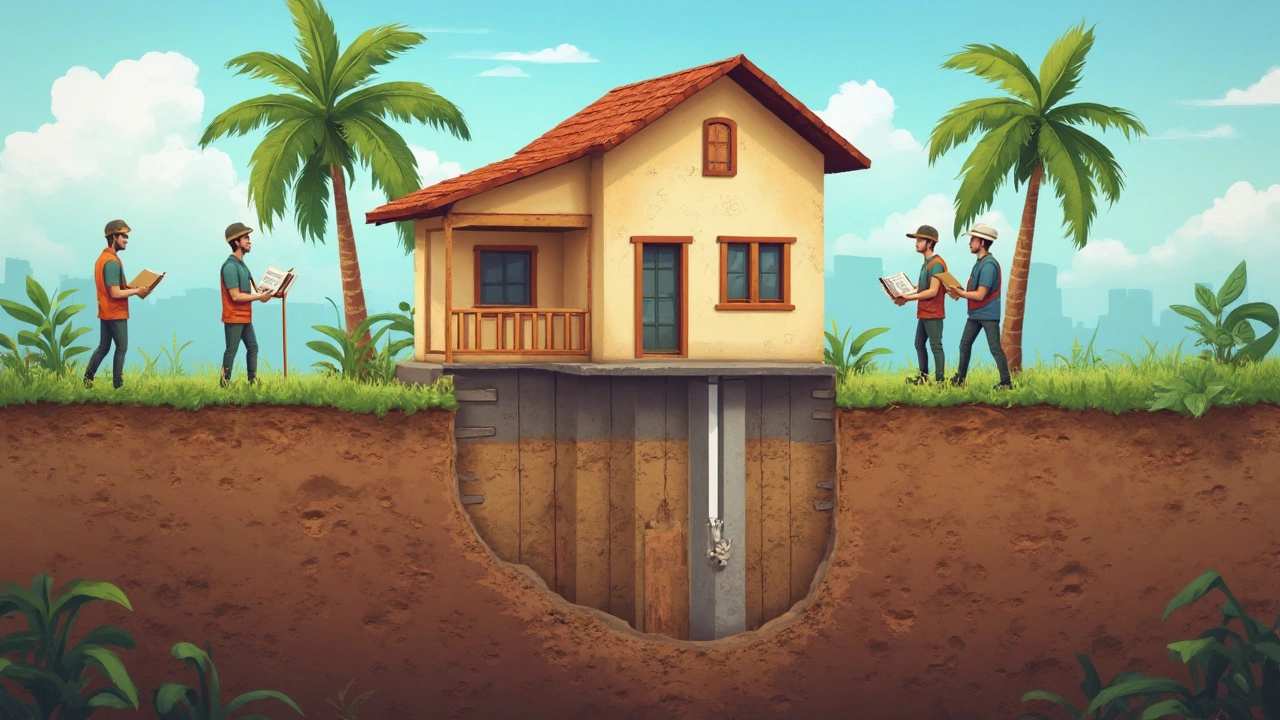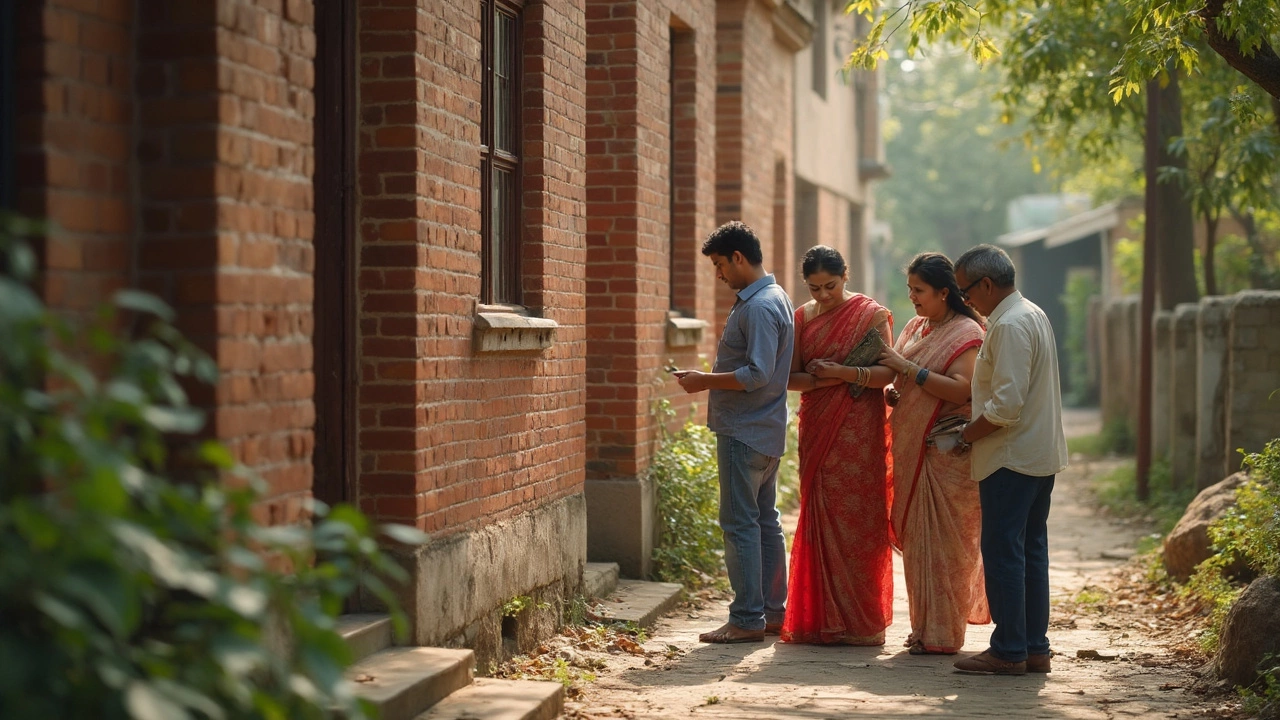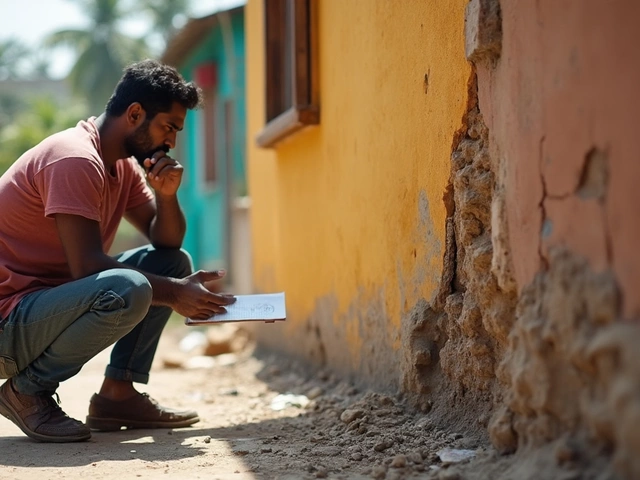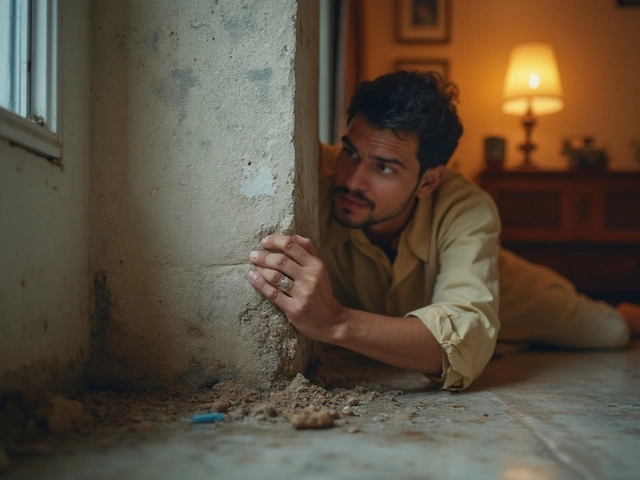How to Fix Sinking Foundation: Simple Solutions for a Solid Home
Notice cracks above your doors or floors that suddenly slope? That’s not your house settling in for a nap—it’s probably your foundation sinking. Ignoring these clues can turn a small headache into a financial nightmare fast. Houses don’t sink for no reason, and it’s not just older homes—new builds can get hit too if the ground underneath shifts or washes away.
So how do you stop your home from slipping further? Start by figuring out what’s making it sink. Sometimes, it’s soft soil that can’t hold the weight, maybe from a recent storm that shifted the dirt. Other times, it’s leaky plumbing or trees sucking up moisture right under your house. The fix depends on what’s really happening down below. Don’t reach for the concrete just yet—there are smarter, proven ways to stabilize your foundation without ripping up your whole yard.
- Spotting the Signs Early
- What Makes Foundations Sink
- Popular Repair Methods Explained
- When to DIY vs Call a Pro
Spotting the Signs Early
Most people miss the early signals a foundation is sinking. It’s easy to blame a stubborn door or a small crack on “just old house stuff,” but these can be red flags. Spotting problems early is the first line of defense—fixing things now always costs less than waiting until you need jacks and piers.
Look for these telltale signs:
- Stair-step cracks in brick or block outside
- Cracks running at an angle from window or door corners
- Doors and windows sticking or refusing to close right
- Floors that feel uneven, or where you see gaps between floor and baseboard
- Gaps between walls and ceiling or between walls and the outside
- Diagonal cracks in drywall, especially above doors and windows
Here’s a table with some quick facts on when you should worry:
| Warning Sign | What It Often Means | Act Fast? |
|---|---|---|
| Small hairline cracks (<1/8 inch) | Normal settling | No, but watch |
| Wide or growing cracks (>1/4 inch) | Possible foundation movement | Yes |
| Sticking doors/windows | Frame shifting | Yes |
| Sagging floors | Subfloor or foundation issue | Yes |
| Cracks after big rain or drought | Soil shifting | Yes |
One important thing: not all cracks or sticky doors mean you have a sinking foundation. Changes to humidity, minor settling, or even bad framing can cause similar issues. Still, if you’re seeing more than one sign—or if a crack keeps getting bigger—it’s smart to get it checked out by a pro who knows what to look for.
What Makes Foundations Sink
Most of the time, a sinking foundation isn’t a total shock—it’s usually caused by what’s going on under and around your house. Soil movement plays the biggest role here. When the dirt under your home shifts, gets too wet, or dries out, your foundation can start to drop or tilt. Homes built on clay-rich soils run into trouble the most because clay swells up like a sponge when wet and shrinks when dry, which puts stress on the foundation year after year.
Heavy rains can wash away soil right below your foundation, making your house lose its footing. On the flip side, droughts or tree roots can suck moisture from the ground, causing the dirt to shrink or crack. Leaky pipes, poor drainage, or even bad grading around your home can send water where it shouldn’t go, weakening the soil.
- Sinking foundation happens fast if one side of your house sits on solid ground and the other on softer, settling soil. This uneven pressure is what causes those annoying cracks and sticky doors.
- Old homes aren’t the only ones at risk; new builds with rushed site prep or cheap fill dirt are just as likely to dip and sway.
- Nearby construction or heavy traffic can vibrate the soil enough to “shake” your foundation loose, especially if it was already hanging on by a thread.
Check out this quick breakdown of main causes and how common they are, based on home inspection data:
| Cause | % of Homes Affected (US) |
|---|---|
| Clay soil expansion/contraction | ~55% |
| Poor drainage or plumbing leaks | ~25% |
| Tree roots or drought | ~10% |
| Vibration/construction | ~5% |
| Other (fill soil, bad grading, etc.) | ~5% |
If you spot the warning signs—crooked floors, growing cracks, or doors that drag—you’re probably dealing with one or more of these causes. Knowing what’s underneath your house is the first step to stopping the sinking for good.

Popular Repair Methods Explained
Fixing a sinking foundation isn’t about smearing on more concrete and hoping for the best. Homeowners today have a bunch of repair options that actually work, and each fits a specific type of problem. Here’s what you need to know about the most common fixes:
- Push Piers: These are steel pipes pushed deep into the ground below your foundation until they hit solid bedrock or stable soil. Once in place, they help lift your house back to its original level. They’re perfect for homes where the soil is just too weak to support the structure.
- Helical Piers: Think giant metal screws. These get twisted into the soil below the house and provide long-term support. They’re good for lighter structures (like porches) and areas where soil layers vary a lot.
- Slabjacking (or Mudjacking): Here, a contractor pumps a cement mixture or special foam underneath a sunken slab. This raises the slab and fills in any gaps beneath. It’s cheaper if you catch a sinking slab early, but not great for bigger issues or if the soil keeps shifting.
- Soil Injection: For sandy or clay-heavy soils that swell and shrink, technicians inject soil stabilizers (like polyurethane). This makes loose ground firm up without much digging. It’s pretty high-tech, and great for small problem areas.
These repairs aren’t one-size-fits-all. The right fix depends on your soil type, the amount of settlement, and the structure itself. Here’s a quick look at how they compare by cost, effectiveness, and downtime:
| Method | Typical Cost (USD) | Time to Complete | Best For |
|---|---|---|---|
| Push Piers | $10,000 - $25,000 | 2-5 days | Heavy homes on weak soil |
| Helical Piers | $12,000 - $30,000 | 2-4 days | Lighter structures, variable soil |
| Slabjacking | $3,000 - $7,000 | 1 day | Concrete slabs, minor fixes |
| Soil Injection | $2,000 - $10,000 | Half-day to 1 day | Localized settlement |
Most contractors offer warranties for their work, but ask if it transfers if you sell your house. Also, watch out for anyone who promises a fix in a few hours for cheap—that almost never lasts. The bottom line? The job’s done right when your floors stop sloping and those cracks in the wall stop spreading.
When to DIY vs Call a Pro
Let’s be honest—fixing a sinking foundation isn’t always a weekend job. Sometimes, simple fixes are all you need. Other times, grabbing your toolbox can actually make things worse or barely patch up the real issue. Here’s how to tell the difference.
If the problem is small, like a hairline crack in drywall or a tiny gap by one window, you might handle it with some basic materials. Filling small cracks with epoxy or caulk can stop water from trickling in, and keeping an eye on changes is smart. Also, you can fix drainage around your home—adding downspout extensions or re-grading soil away from your foundation—without calling anyone.
- Cracks wider than 1/4 inch? Let a pro check it out.
- If doors or windows won’t close, you probably need an expert.
- Bouncy floors, large gaps in exterior bricks, or uneven floors are red flags—call someone who knows foundations.
Here’s a quick breakdown of jobs you can do yourself versus ones better left to pros:
| DIY Tasks | Call a Pro |
|---|---|
| Seal hairline drywall cracks Improve drainage Patch up small mortar cracks Redirect gutters | Large or growing foundation cracks Foundation sinking more than an inch Using piers or underpinning Sloping floors or structural shifting Plumbing issues under the slab |
Some foundation repairs involve equipment and concrete best handled by licensed crews. Pier installation, slab jacking, or major underpinning can run $3,500 to $7,000 (or up to $15,000 for big jobs), but doing it wrong could double your repair bill or risk your home’s structure.
The rule of thumb: If you can’t figure out what’s causing the problem, or things keep getting worse after your DIY fix, get a specialist. Most pros offer cheap or even free initial inspections, so you lose nothing by getting their opinion. Spending a little now often saves a lot down the line.







Comments